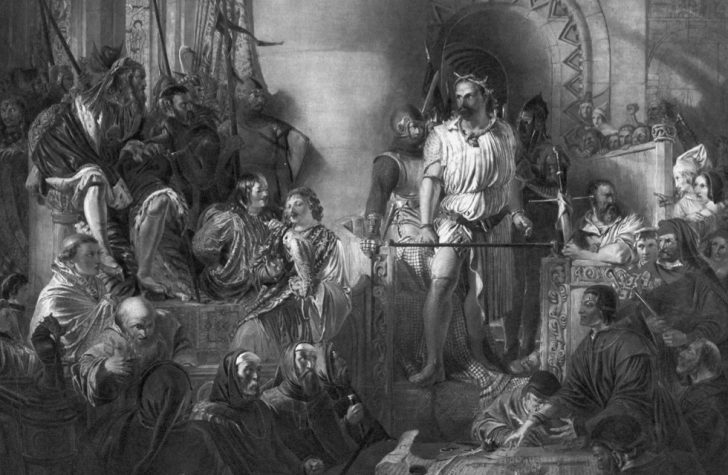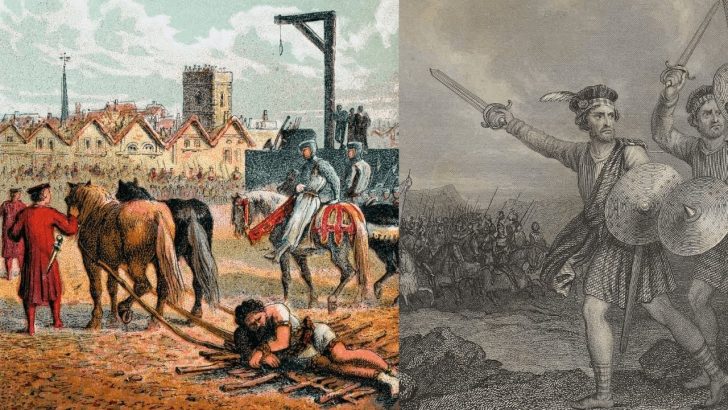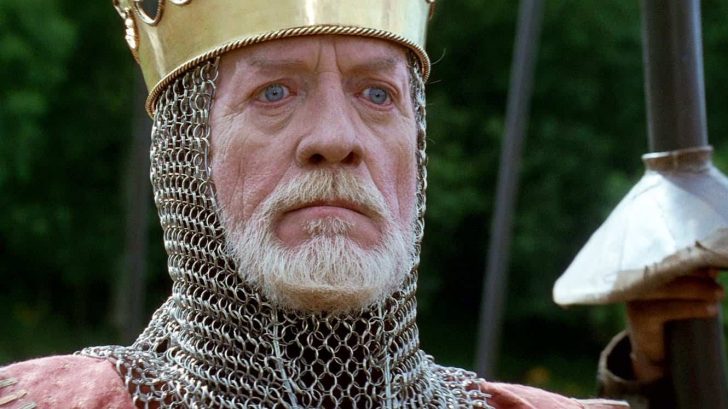Have you ever wondered how did William Wallace die, the braveheart who inspired a nation? William Wallace, a name synonymous with Scottish independence, left an indelible mark on history. But his end was as dramatic as his life.

History Extra / William Wallace is one of the most influential figures during the First War of Scottish Independence (129.)
Born around 1270, emerged as a towering figure during the First War of Scottish Independence. His early life remains somewhat shrouded in mystery. But it is clear that his upbringing in the Scottish Lowlands shaped his fierce patriotism. Wallace was a man of formidable physical presence and equally impressive charisma, qualities that would later rally the Scottish people to his cause.
Wallace's Contributions During the First War of Scottish Independence
The journey of Wallace from obscurity to national hero began in 1297. Discontent with English rule, he led a series of uprisings against the occupation forces of King Edward I of England. His most notable military triumph was the Battle of Stirling Bridge on September 11, 1297. Despite being heavily outnumbered, Wallace’s tactical ingenuity led to a resounding victory.
Following Stirling Bridge, Wallace was knighted and appointed as Guardian of Scotland. His tenure, however, was fraught with challenges. The Scots, though inspired by Wallace’s fervor, faced a relentless and resourceful enemy. The tide turned against Wallace in 1298 at the Battle of Falkirk, where the Scottish forces were defeated by the English. Despite this setback, Wallace continued to resist, becoming a symbol of unwavering defiance.
The Capture and Trial of William Wallace
The answer to the question "how did William Wallace die" begins with his capture. Wallace’s resistance continued until 1305 when he was betrayed and handed over to the English by Sir John Menteith. His capture marked the beginning of a grim chapter in his life.

YT / Sir Willam Wallace was captured and transported to London in 1305 right after the Battle of Falkirk.
Wallace was transported to London, where he was put on trial for treason. The trial, held on August 23, 1305, was a farce. Wallace was accused of being a traitor to the English crown, to which he famously retorted that he could not be a traitor, as he owed no allegiance to Edward I. His defense fell on deaf ears, and the trial concluded with a predetermined verdict of guilt.
The Gruesome Execution of Sir William Wallace
To understand how did William Wallace die, one must confront the brutality of his execution. Wallace’s death was designed to be a public spectacle, a deterrent to any who might follow in his footsteps. On August 23, 1305, he was dragged through the streets of London to Smithfield.

The News / William Wallace was dragged naked to Smithfield, his “private parts” were burned in front of him, and was eventually executed before sending his quartered lifeless body for public display.
Wallace was hanged, but cut down while still alive. He was then subjected to evisceration, his organs removed and burned before him. Finally, he was beheaded, and his body was quartered. His head was displayed on London Bridge, and his limbs were sent to various parts of the country as a stark warning.
How Did William Wallace Die?
So, how did William Wallace die? Well, his death embodies the struggle for Scottish independence. Wallace’s execution was intended to quash the spirit of rebellion, but it achieved the opposite. His death galvanized the Scottish resistance, fueling the fires of nationalism that would eventually lead to victory under Robert the Bruce.
Wallace’s legacy endures to this day. He is remembered as a symbol of courage, resilience, and the unyielding quest for freedom. His life and death have been immortalized in literature, film, and the annals of history.



